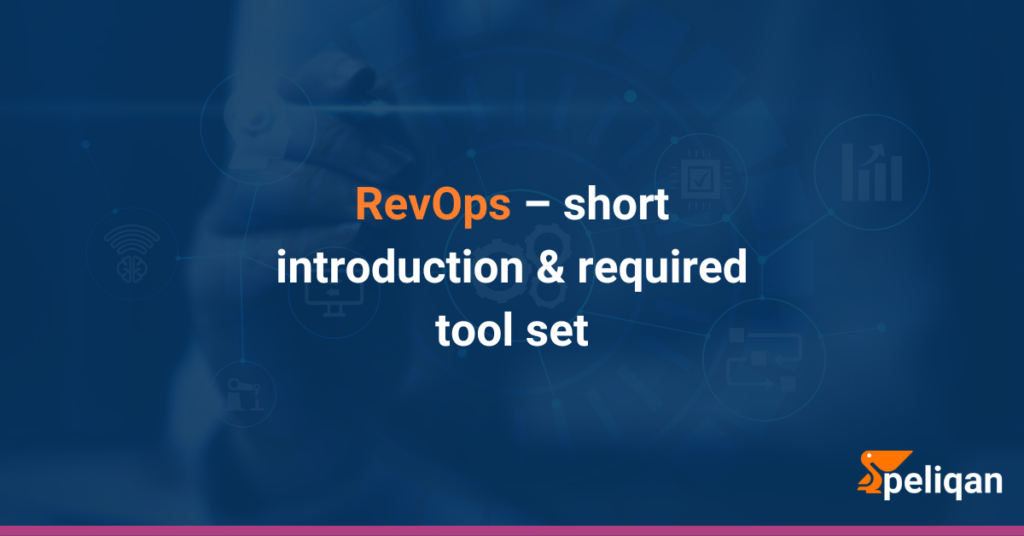RevOps – short introduction & required tool set
In today’s fast-paced business landscape, maximizing revenue and optimizing operational efficiency are paramount to achieving sustained success. Revenue Operations (RevOps) has emerged as a strategic approach that aligns sales, marketing, and customer success teams to drive revenue growth. In this article we will explore the concept of RevOps, highlights essential technologies, and talk about the need for a data platform to support the various aspects of RevOps such as synchronizing data between SaaS applications.
What is RevOps?
Revenue Operations (RevOps) is a holistic approach that integrates sales, marketing, and customer success functions within an organization. It breaks down silos and promotes cross-functional collaboration to streamline processes, improve data visibility, and drive revenue growth. RevOps focuses on optimizing the entire customer lifecycle, from lead generation to customer retention and expansion, by aligning teams, processes, and technologies.
Essential Technologies in RevOps
To effectively implement RevOps, organizations must leverage a range of technologies that enhance collaboration, automation, and data management. Here are some key technologies in the RevOps stack:
-
CRM Software: A CRM platform serves as the central hub for managing customer data, tracking interactions, and monitoring the sales pipeline. It enables teams to have a unified view of customer interactions and facilitates efficient collaboration.
Marketing Automation Software: Marketing automation platforms automate repetitive marketing tasks, such as email campaigns, lead nurturing, and lead scoring. These tools help align marketing and sales efforts, ensuring a seamless customer journey.
Revenue Intelligence Software: Revenue intelligence platforms deliver insights into sales activities, conversational intelligence, and deal health, enabling data-driven decisions. These tools improve forecasting, spot deal risks, and streamline pipeline management for revenue growth.
Sales Engagement Tools: Sales engagement tools enhance the productivity of sales teams by automating outreach, tracking customer interactions, and providing analytics for performance optimization. They facilitate personalized and timely communication with prospects and customers.
Business Intelligence (BI) Tools: BI tools enable organizations to gather, analyze, and visualize data from various sources. They provide valuable insights into sales and marketing performance, customer behavior, and revenue metrics, helping teams make data-driven decisions
The Role of a Data Platform in RevOps
A data platform acts as the backbone of a successful RevOps strategy. It enables seamless integration and synchronization of data between different SaaS applications, ensuring data accuracy, consistency, and accessibility. Here’s why a data platform is crucial from a RevOps perspective:
-
-
- Unified Data View: A data platform allows teams to consolidate data from various applications, including CRM, marketing automation, and customer success platforms. This unified view provides a comprehensive understanding of customer interactions, enabling teams to make informed decisions and deliver personalized customer experience.
- Efficient Data Flow: SaaS applications often operate in silos, resulting in fragmented data and manual data transfers. A data platform automates the flow of data between these applications, eliminating manual work and reducing the risk of errors. This ensures that all teams have access to the most up-to-date and accurate information.
- Enhanced Analytics and Reporting: By synchronizing data from multiple sources, a data platform empowers organizations to generate comprehensive reports and perform advanced analytics. This enables RevOps teams to identify trends, uncover actionable insights, and optimize processes to drive revenue growth.
- Scalability and Flexibility: As businesses grow and adopt new SaaS applications, a data platform provides scalability and flexibility. It allows for easy integration with new tools, ensuring that the RevOps infrastructure remains agile and adaptable to evolving business needs.
Revenue Operations (RevOps) revolutionizes how organizations drive revenue growth by aligning sales, marketing, and customer success functions. To successfully implement RevOps, leveraging the right technologies is crucial. A data platform plays a pivotal role in synchronizing data between SaaS applications, providing a unified view, enhancing operational efficiency, and enabling data-driven decision-making. By embracing RevOps and utilizing the right technologies, businesses can unlock their full revenue potential and thrive in today’s fast paced business landscape.

















